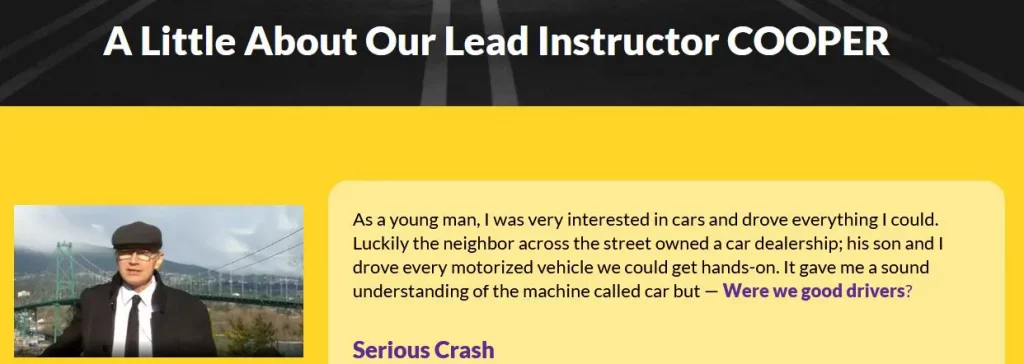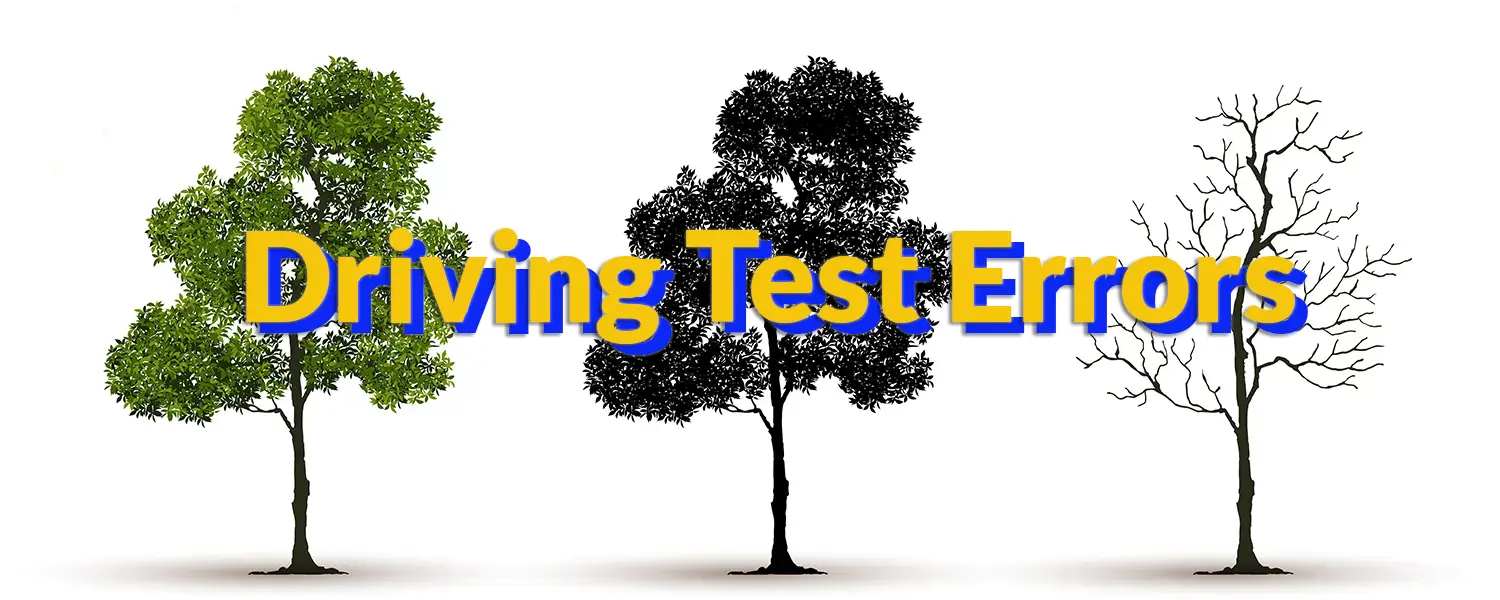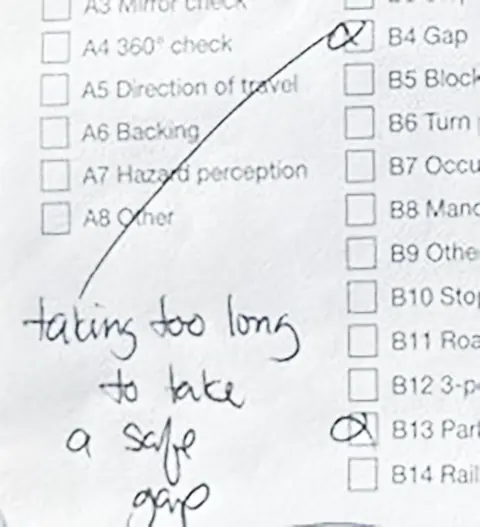taking too long to take a safe gap – space between two moving cars is called the gap. When a large enough space for you to enter without interfering with the flow of other cars, go! Not going when a space comes slows the movement of traffic. I compare it to stopping to look around on a green right-of-way pathway. Move with the flow. When on a green act like a green. This can add up to a fail.
not clear to proceed – You move out into traffic or a gap space or onto a new roadway and cause other vehicles to adjust speed or positioning for you. You are forcing other cars to let you in. FAIL.
one hand inside wheel – Best to always have a balanced two hands on the wheel for maximum control to manoeuvre in any and all directions. One hand can come off to manage controls briefly, then always back to two hands. No hands is taboo!
watch 4 hard uneccesary Rapid Acce/decelerations – Rough on the gas and brakes when it is not needed. Generally be smooth as often as you can however, when needed use the control assertively, if and when needed. Repeat this and it will add up to a fail or it demonstrates that you do not understand right-of-ways. Can add up to a failure.
parking brake – driving away with the parking brake on can damage the car and burn out your rear tire brakes. Fits into one of the instant fails. If you damage the car it makes the car unsafe. Car unsafe, driver unsafe. FAIL
(V) travel in the parking lane (not travel lane, passed other cars) – Violation passing another car on the right when the car is not set up for a left turn nor turning left. Passing on the right can only occur if there are clearly marked lanes. If it’s one big lane or used as parking, you cannot overtake another vehicle on the right.
GO READ EXAMINER NOTES 01
GO READ EXAMINER NOTES 02
GO READ EXAMINER NOTES 03
GO READ EXAMINER NOTES 04
All of these are excellent examples to learn when working with your driving instructor on a driving lesson. There are many laws in the BCMVA, British Columbia Motor Vehicle Act. Any one of them can appear during your driving test and catch you. It’s better to expose yourself to all the laws at least briefly. How many laws are there in total? More importantly, how many of the laws does your driving instructor know? Maybe that’s not a good question to ask! Maybe it is! Try it on your next Vancouver driving lesson.












Comments are closed